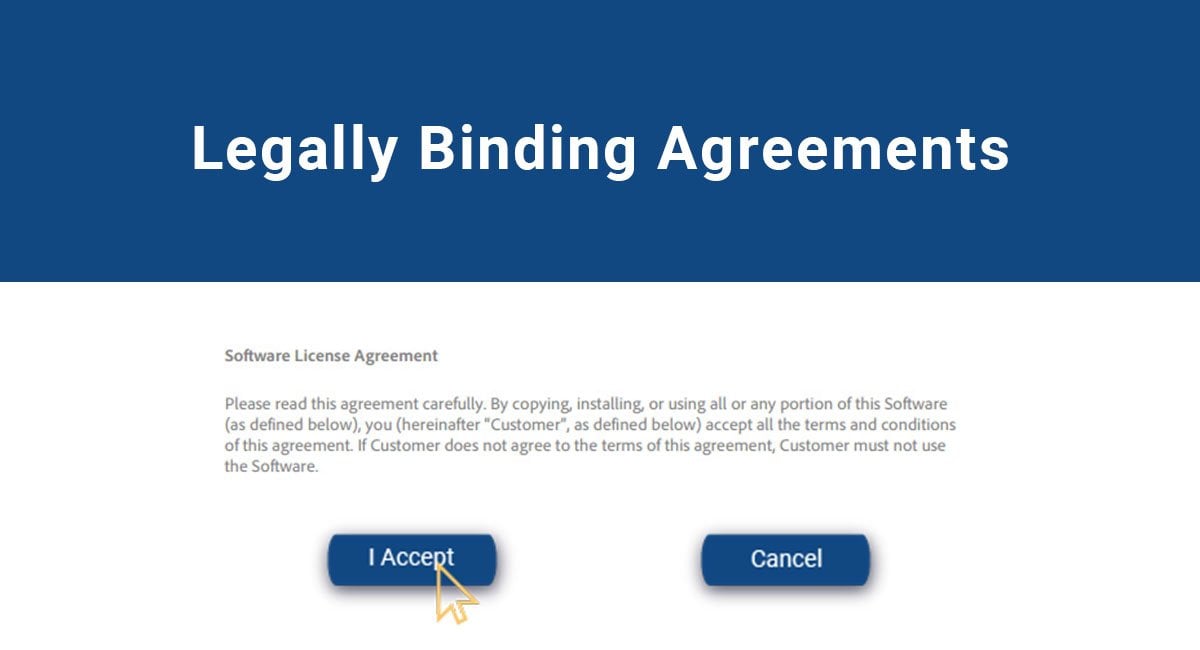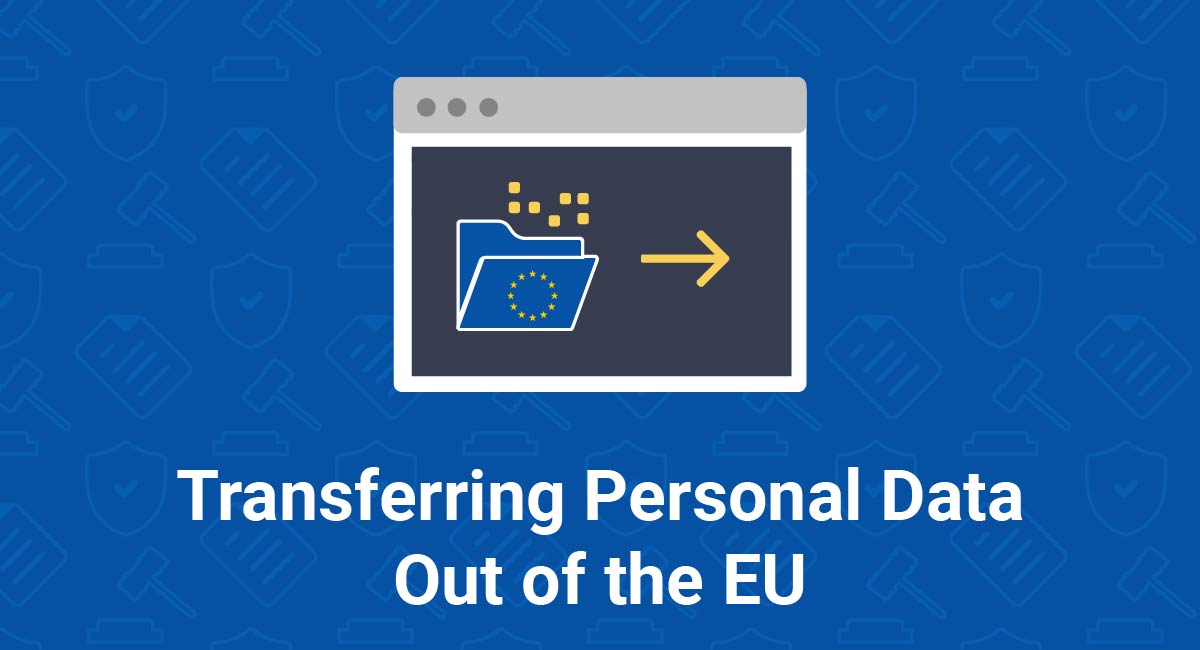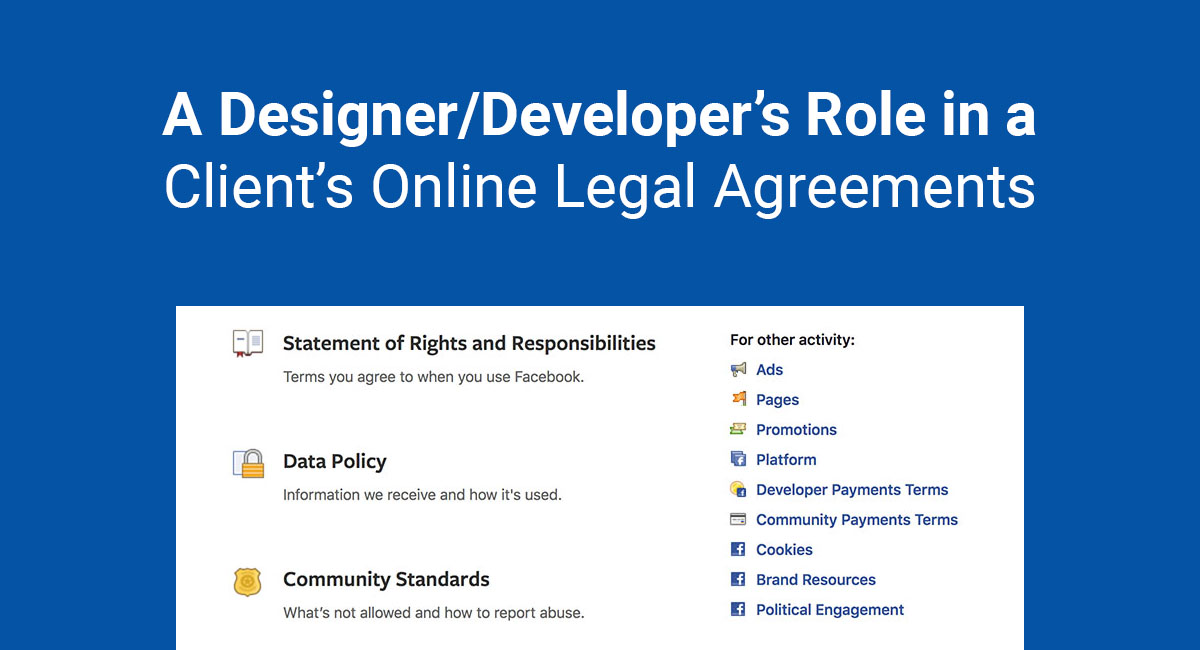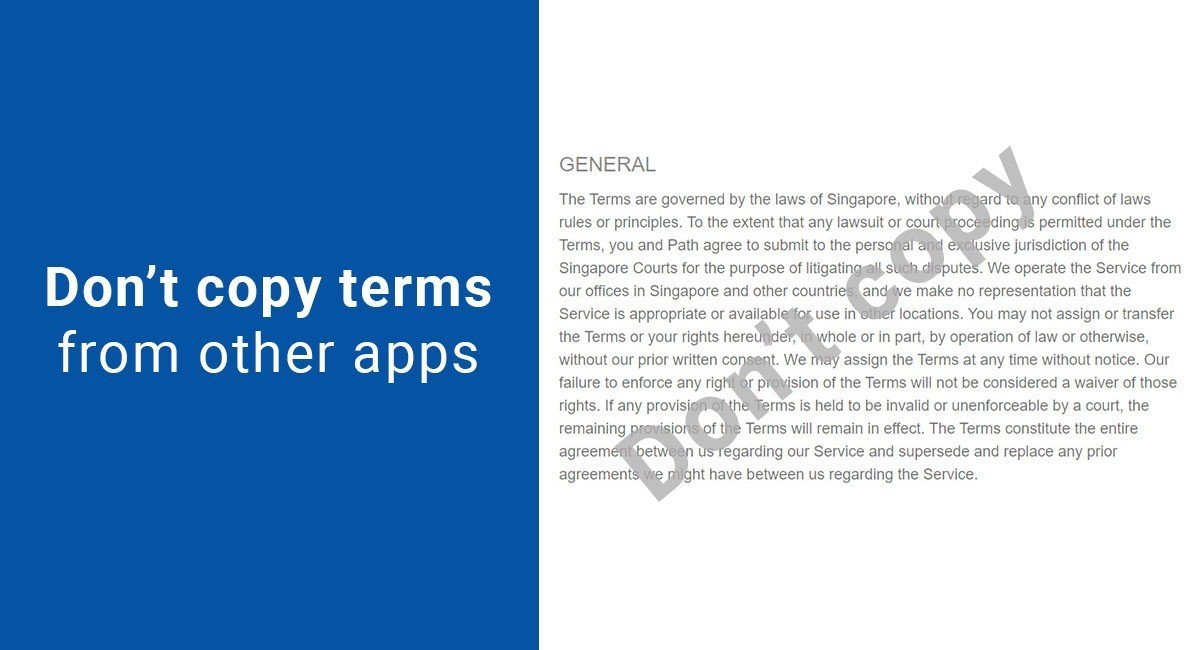Online agreements challenge traditional contract law mainly because they are not a mutual agreement between users and developers. They are terms that must be accepted before users can proceed and that is not always considered fair.
The reason these agreements become legally binding and enforceable despite their deviance from traditional contracts is the fact that they are accessible. You create legally binding agreements by assuring that your users have notice of them and the opportunity to review them. This is how to make this work for your website, app or other online service.
Enforceable Contracts

A legally binding agreement is any contract with agreed upon terms which include actions that are required or prohibited. Traditionally, contracts address providing goods and services in exchange for payment, although they can also reflect barter situations that trade services or goods.
When done correctly, a legally binding agreement is enforceable in a court of law. Parties may collect damages if one of the parties fails to meet the requirements in the contract.
Generally, a legally binding agreement includes:
- Obligations and conditions - This is what each party must provide, e.g. a good or service in return for money.
- Performance - How parties must perform contract terms, e.g. specifications for products or standards of behavior to follow in exchange for access to an online community.
- Payment terms - If payment is required for the services or goods, the terms are here, e.g. upfront payment, monthly subscriptions, a set term to pay full price, etc.
- Liabilities - Any liabilities that must be absorbed by one party. For example, a construction contract will place liability for worker injuries on the contractor, not the party requesting the service.
- Breach of contract - Circumstances that are considered a breach of contract and what will happen if that occurs. Many contracts state the amount of damages in case of breach to reduce court battles.
Online agreements like Terms & Conditions, Privacy Policies, and End User License Agreements contain the elements above. They describe services rendered, any subscription fees, and duties owed to users, like protection of privacy.
But they are not negotiated between developers and users. They merely exist and users must accept them or never receive access to a website or app. This has produced challenges with traditional contract law.
Creating Legally Binding Online Agreements

Online agreements need to be legally binding to allow you to enforce rules, protect privacy, avoid liability, and notify users of what to expect.
The issue that often arises with online agreements attached to websites is whether the parties actually agreed to the terms. In most contract scenarios, parties negotiate to come to terms everyone finds acceptable. The signed contract is a manifestation of that discussion.
However, when it comes to Privacy Policies, Terms & Conditions, End User License Agreements, and Disclaimers, there is no negotiation. Users only have the choice to agree to the terms and use the app or decline the terms and lose access.
Fortunately, courts provided guidance for these agreements so they remain enforceable. The primary element is notice--that users can find the agreements and have the opportunity to review them.
Factors affecting the enforceability of online agreements include:
- Clear and conspicuous notice of terms - Agreements are available at sign-up and in a conspicuous location on the app platform or website.
- Active acceptance - The mere presence of agreements or the links to them is not enough. Users must be able to show acceptance by clicking a checkbox, clicking an "I Agree" button or have it clearly communicated that registration for a website or app shows agreement with the terms.
- Controlled access - Users should not be able to access services or products unless they actively agree to the terms.
- Periodic reviews - Notice of changes, opportunities to accept the terms again, and reminders to review the agreements to keep users informed.
- Location - Make the agreements easy to find through a link, frequently asked questions page or other means so users can access them at any time.
These factors are relevant to all online agreements. They work differently with each agreement but there are also similarities.
Application to Specific Agreements

Online agreements become legally binding in the same ways but it will look different with each different type of agreement. This is how these requirements affect different agreements.
Privacy Policy
The Privacy Policy is the first agreement users see and often the most visible. This makes sense considering that Privacy Policies are required in most jurisdictions.
A common approach is to encourage acceptance of the Privacy Policy (along with the Terms & Conditions) at sign-up. Memebox uses a statement for its approach that indicates to users that signing up means acceptance of the Privacy Policy terms.
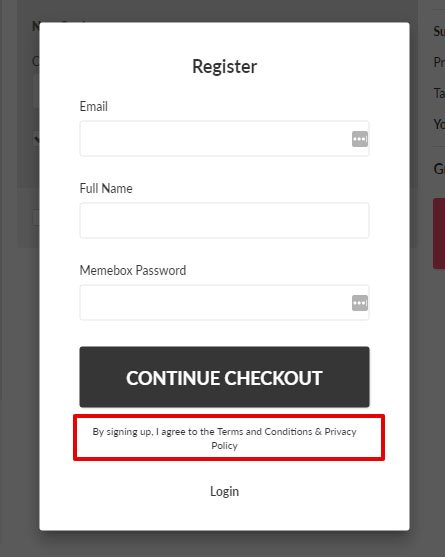
Bluemail works with Google to manage email boxes. It makes acceptance clear with separate "Deny" or "Accept" buttons.
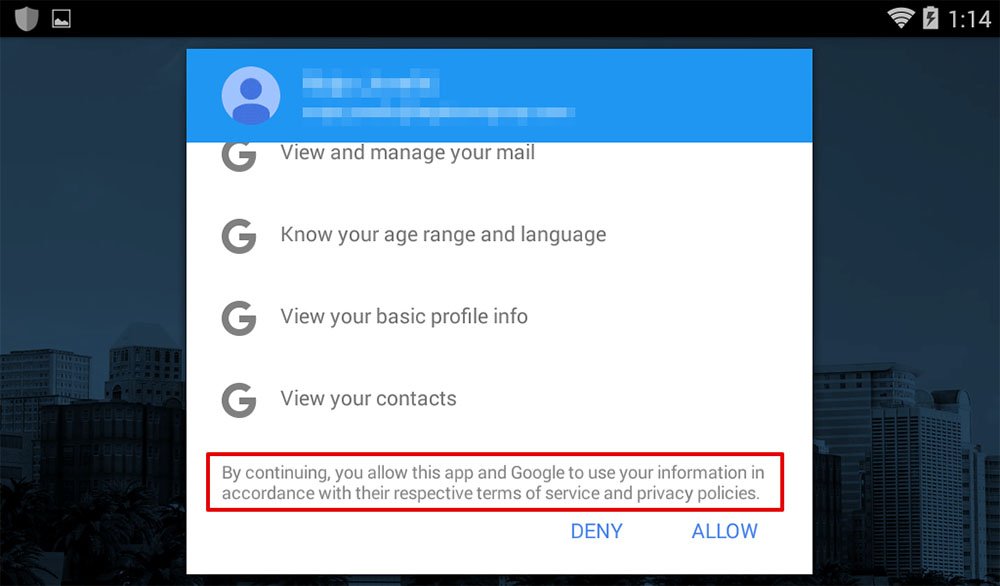
Other developers request direct agreement to new Privacy Policy terms. When Airbnb changed its terms, users had to finish this dialog before continuing to use their website and app:
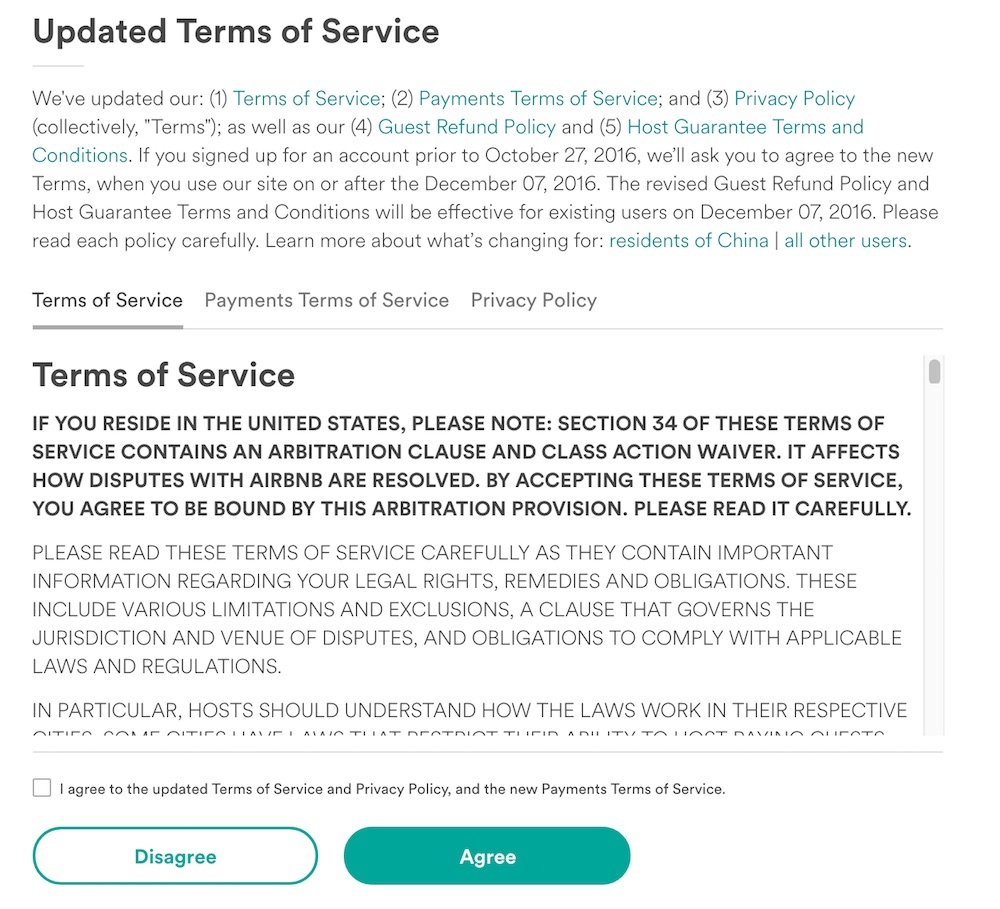
Another way to engage users in your agreements while also providing notice of changes is with banner announcements. The website recode.net produced this banner when it changed its Privacy Policy last year:

Finally, while this alone will not assure your Privacy Policy is legally binding, it adds another layer of enforceability. Many developers indicate in the Privacy Policy that using the services assumes acceptance of the terms. Airbnb provides this example:

Using a combination of the examples above assures your Privacy Policy is legally binding. Keep clarity in mind in website drafting and you will likely meet legal requirements.
Terms & Conditions (T&C)
Terms & Conditions (T&C) are not legally required but they are essential to running a website or app well. This agreement contains the rules for using your app or website and allows you to remove problematic users. The T&C becomes legally binding the same way as a Privacy Policy as the documents are often presented together.
Acceptance at signup is standard. Makr provides an example where it is clearly indicated that users accept the T&C when they create an account:
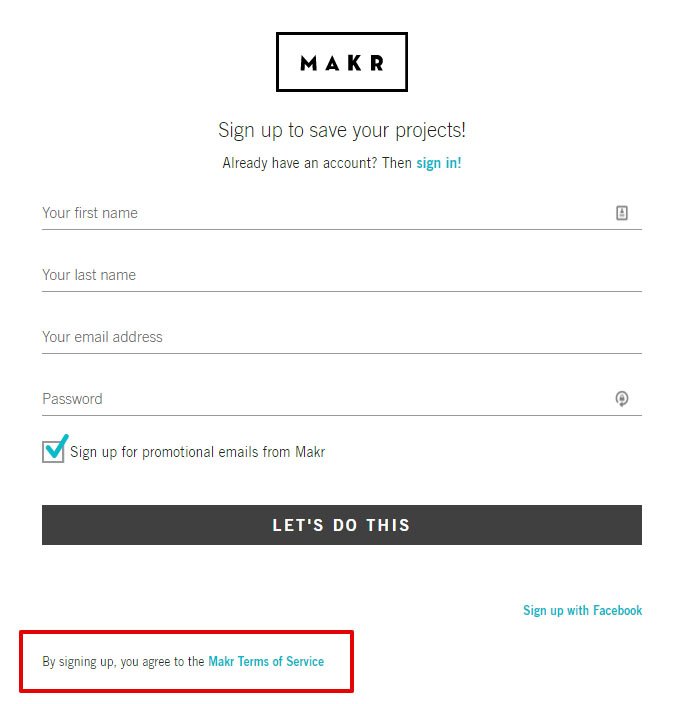
This also works for updated T&C. The Airbnb example used above for the Privacy Policy also addressed changes in the T&C. (There are different tabs for the Privacy Policy, T&C, and new payment policy.) If you make extensive changes, that is likely your best course of action since you want to assure agreement. Otherwise, you risk not being able to enforce your new terms.
The T&C also contains terms of acceptance as well, much like the Privacy Policy. While this is not sufficient on its own, it is extra reassurance of acceptance of the terms and enforceability. Makr takes this approach:
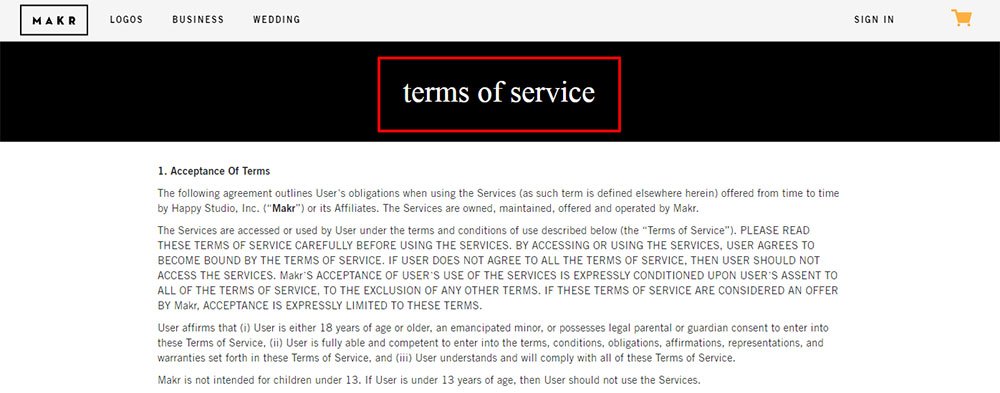
Like the Privacy Policy, you need to keep T&C conspicuous and accessible to users.
- Provide links to the agreement in your sign-up process, and
- Consider adding a checkbox or "I Agree" button as well
End User License Agreement (EULA)
The End User License Agreement (EULA) is similar to a T&C in that it provides users rules for using the app or website.
However, it is more extensive in intellectual property protection because users download software to access the service. Developers need further protection to prevent copying and redistribution while emphasizing that the software is licensed for use--not owned by the user.
Naturally, the EULA presents to the user when they download software. Adobe Flash Player provides a link to the EULA and a checkbox to assure acceptance of the terms:
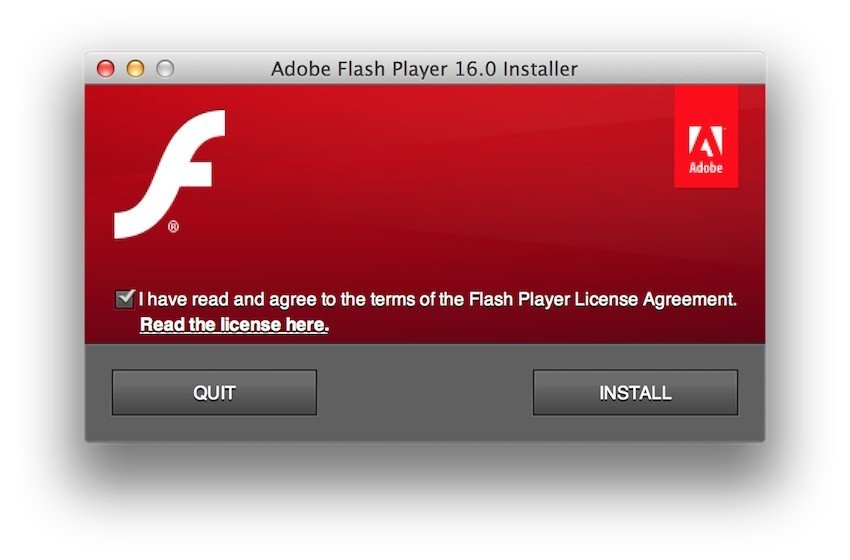
In addition to the notice at download, Adobe also makes it clear that users accept the terms by using its products. This is in the first paragraph of the EULA and while not sufficient on its own, it definitely clarifies the issue:

Since EULAs contain terms that are essential to protecting your interests, take an active approach to their acceptance. Require that users hit a checkbox or "I Agree" button before they download. That, along with the acceptance language in the document, will make your EULA legally binding.
Disclaimers
Disclaimers exist in two places: the T&C, and in conspicuous places on websites. They are not contracts on their own as much as they are warnings or notices to users. They exist to inform users of possible risks and limitations of information or products on a website.
Courts rule disclaimers as acceptable and enforceable as long as they are easy to find. If you put them where a user cannot help but see them, they can protect you.
LexBlog provides a platform for lawyers to host blogs. It contains this disclaimer on every page to protect lawyers from liability. Users see it every time they finish reading a blog entry:

WebMd puts its Disclaimer at the top of the T&C:
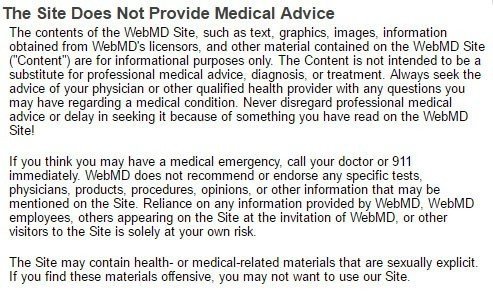
If you take the approach of WebMD, have good acceptance procedures for your T&C. Practice overkill with active acceptance of updates and notices to users, especially if there is a good chance that users may consider you a trained professional (like with WebMD and its medical information).
If you decide to present Disclaimers on your website, use larger different fonts and other web drafting techniques to make them stand out. You can even create a pop-up with the disclaimer that requires users to click "OK" before they can proceed.
Online agreements are unique in that users do not give input to the terms they must accept. However, with a combination of clarity and transparency, you can assure your online agreements remain legally binding.

Comprehensive compliance starts with a Privacy Policy.
Comply with the law with our agreements, policies, and consent banners. Everything is included.
